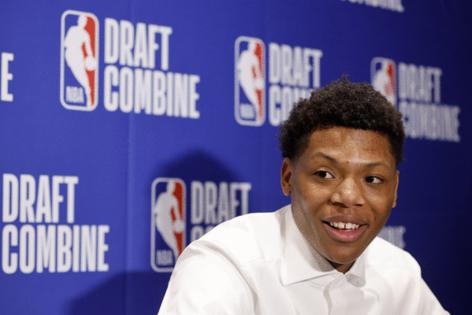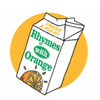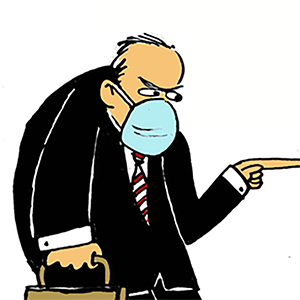David Murphy: Sixers can't make the same mistake thrice and draft Ace Bailey at No. 3
Published in Basketball
PHILADELPHIA — The word that matters most in the debate about Ace Bailey is the word that should matter most to the Sixers in Wednesday’s draft.
Maturity.
A chronic lack of it is the primary reason the Sixers are where they are. It is why Ben Simmons pouted his way out of Philadelphia and into irrelevance. It is why Markelle Fultz wilted under the spotlight. It is why Joel Embiid has never played in an Eastern Conference finals. It is why he is suddenly facing the very real prospect of becoming the greatest player never to have done so.
And, yes, it is why the Sixers shouldn’t have Bailey’s name anywhere near the top of their draft board.
Frankly, at this point, it shouldn’t even need to be said.
Before the NBA draft, the Sixers are standing on a precipice that is unlike any they’ve occupied since the summer of 2017. Most teams that have been there before don’t get a chance at a do-over. The Sixers somehow wrangled one. They defied the odds by collapsing so completely that their alleged superteam ended up in the lottery. Then, they defied the odds again by landing the third-best pick with the sixth-best odds. Now, they are where they last were eight years ago, when they traded up from No. 3 to pair Fultz with Simmons and Embiid and then spent the rest of the summer in a victory lap.
The big question: Has Daryl Morey learned the important lessons of his first four years with the Sixers? Or, is he Charlie Brown lining up for another kick?
Let’s pause to be fair to Morey. The lessons from his first four years are mostly ones that he had no role in creating. The Sixers president has spent most of his tenure in cleanup mode. In fact, his decisions are the only reason the Sixers haven’t already arrived at oblivion.
Morey arrived in Philly needing to wriggle out of the mess his predecessors created when they tried to replace Jimmy Butler with Al Horford. He did it by giving Oklahoma City a first-round pick in order to take on Horford’s contract. That they ended up keeping the pick is something that Morey’s detractors tend to overlook. In fact, the Horford pick was supposed to be this year’s pick. It remains in the Sixers’ possession because it was protected for picks No. 1-6.
The second big thing that Morey did upon his arrival was use the No. 21 overall pick in the 2020 draft on a young guard out of Kentucky named Tyrese Maxey. That worked out, didn’t it? Maxey took a slight step backward this season, his efficiency falling without Embiid’s protective shadow. The emphasis is on slight, though. He averaged a career-high 26.3 points with a .511 effective field goal percentage and 6.1 assists. He may not be the kind of player who can single-handedly carry a team to the playoffs, but he shouldn’t need to be. In Maxey and 2024 first-rounder Jared McCain— another Morey pick who looks like a clear home run — the Sixers have a couple of young franchise fixtures who could fulfill the broken promise of the Fultz-Simmons sequence.
It’s a fascinating juncture. The Sixers are a team that is basically living in two potential worlds. The first potential world is the one the Sixers envisioned last summer, when they signed Paul George to a four-year max contract and gave Embiid an extension. Is it likely that Embiid returns from a second consecutive knee surgery to become the player he was when he was named NBA MVP in 2023? Probably not. But it is more than possible that he returns next season as someone who can be an impact player on a team with Maxey, McCain, George and whoever the Sixers end up drafting at No. 3.
The second potential world is the one the Sixers need to assume is the real one: that the Embiid era is over, that George will be playing somewhere else by the midway point of his deal, that McCain and Maxey and this year’s pick will be the group they begin to build around. The best way to win in such a world is to draft a player who has the same spirit as McCain and Maxey, the kind of nature that leads to the sort of player who outperforms his draft position and captures the imagination of a fan base. A serious player who plays the kind of basketball that is conducive to team-building. A player like the ones the Thunder and Pacers have developed into conference champions.
Bailey might turn out to be such a player. But the current evidence suggests he is a player who carries way too much risk of becoming the next Simmons or Fultz. He doesn’t sound like a bad kid. He just sounds like … a kid.
“He’s not immature like a [butthead]. … He’s goofy,” an NBA scout told the Philadelphia Inquirer’s Keith Pompey last week. “Dancing in line. You are doing drills, he’s dancing. ‘Oh, that’s my song.’ … He’s playful, which is age-appropriate.”
Problem is, winning in the NBA is not an age-appropriate endeavor. At least, not for an 18-, 19-, 20-year-old-kid. It is a serious business. It requires a player who has a mentality beyond his years. Simmons didn’t have it. Fultz didn’t have it. Embiid would have been an even greater force if he’d had more of it.
Players like V.J. Edgecombe and Kon Knueppel may not have Bailey’s upside. But there has been no question about whether they have the right mentality. They are both winners. They have both maximized their skill sets to the benefit of their teams. They are serious players who deserve serious consideration at No. 3 overall.
The Sixers have an opportunity to show that they have learned the lessons of the early post-process years. They have a chance to chart a new course, to establish a new identity, to build a bridge to a new era over the troubled waters of the past. Saying no to Bailey is a start.
©2025 The Philadelphia Inquirer, LLC. Visit at inquirer.com. Distributed by Tribune Content Agency, LLC.







Comments